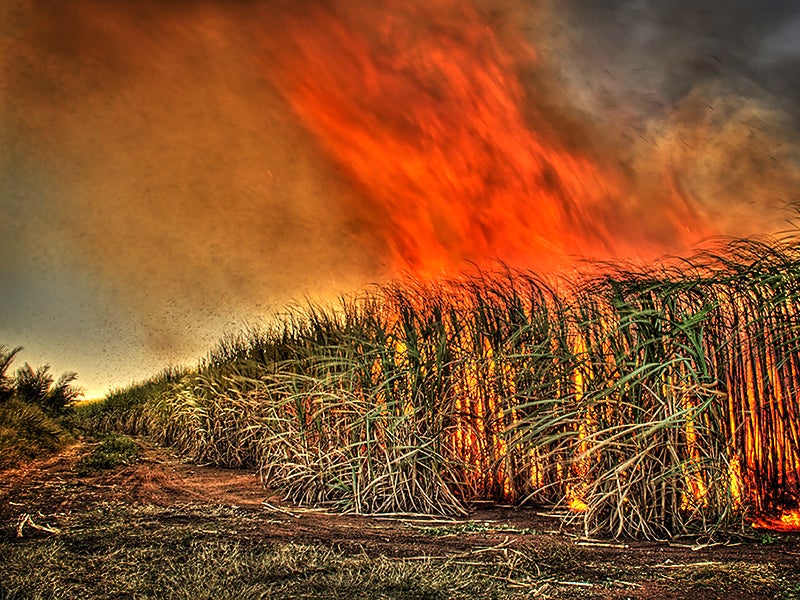Sugar Cane Burning Not So Sweet for Florida’s Residents
Each year, Florida’s sugar-growing corporations emit thousands of tons of hazardous air pollutants by burning sugar cane leaves, a dirty practice that Earthjustice is working to stop.

This page was published 10 years ago. Find the latest on Earthjustice’s work.
To most people, winter in South Florida evokes familiar postcard images of blue sky, sunny beaches and waving palms. But for people who live and work amid the sugar-growing fields around Lake Okeechobee, the season means frequent episodes of black smoke, sooty lungs and burning eyes.
From October to April, sugar-growing corporations light massive fires in their fields to remove the outer leaves around cane stalks before harvesting. The burning creates a foul odor in the air and ash rains down on farming towns in Glades, Hendry and Palm Beach counties. Some days, the dark sugar cane smoke travels for miles eastward, where it pollutes waterfront communities in Palm Beach.
This outdated agricultural practice reaches back decades, but in November, we decided to try to stop it. We filed a petition on behalf of the Sierra Club, asking the federal EPA to regulate the smoke pollution coming from the hundreds of thousands of acres that U.S. Sugar Corp. burns in South Florida each year. We argued that U.S. Sugar’s Florida Department of Environmental Protection permit is not in compliance with the Clean Air Act because it only regulates the smokestacks at the company’s refinery, and doesn’t regulate the smoke coming off the 150,000 acres of sugar cane the company burns each year.
Records show that regulators badly need to get a handle on this pollution. Sugar cane burning in Glades, Hendry and Palm Beach counties emits more than 2,800 tons of hazardous air pollutants per year. The burning accounts for 86 percent of Palm Beach County’s emissions of formaldehyde, a probable carcinogen, and 69 percent of emissions of toxic acenaphthylene, a pollutant linked to genetic mutations and cancer.
That’s not exactly the sunny postcard images that our busy tourism boosters like to peddle.
And, it doesn’t have to be this way. In some parts of Brazil and Australia, sugar growers have shifted to a greener approach; they cut away the leafy parts of sugar cane and use it to mulch fields. Sugar growers could also use the leafy cuttings as biofuel in processing plants that (unlike the open fields) have pollution control equipment.
Our hope is that this legal challenge will promote change in the industry and save the folks who live around the fields from their annual winter pollution nightmare. One thing we know for sure: Allowing a giant multinational corporation to conduct open burning on thousands of acres without Clean Air Act regulation is both unfair and unsafe.
The Florida regional office wields the power of the law to protect our waterways and biodiversity, promote a just and reliable transition to clean energy, and defend communities disproportionately burdened by pollution.